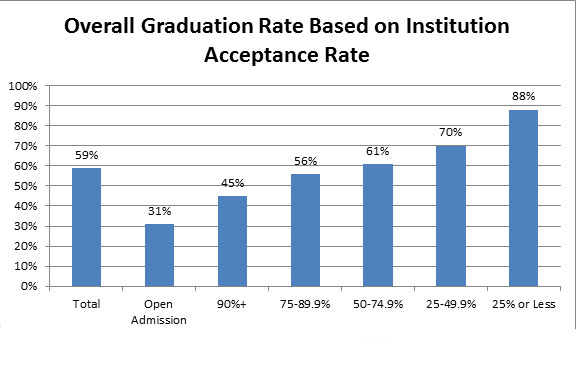The historic increase in the number of degrees means fiercer competition for careers that require postsecondary preparation.
Parents and students who are hoping to look into a crystal ball about the future of four-year colleges and rising costs, should spend some time perusing Trends in College Pricing, a report from the College Board.
An assessment of yearly college tuition, fees and living costs, the report analyzes the “net price” students actually pay after taking grant aid into consideration.
“Efforts are well under way to develop lower-cost methods of delivering college courses,” according to the report, which notes that the 2.9 percent increase in average public four-year college tuition and fees is “smaller than it has been for many years.” But it is “too early to say whether or not these efforts will revolutionize higher education.”
The report reveals five important trends:
1. Net College Costs Are on the Rise
Net college tuition, fees, and room and board costs, based on yearly published figures, remain on the rise for full-time students at both public and private postsecondary institutions. For public institutions, the average net price rose 17 percent, from $10,800 in 2009-10 to $12,620 in 2013-14. The average cost increase at private institutions was more modest, rising about 8 percent (from $21,670 to $23,290).
Takeaway: Federal and state aid is not keeping pace with the rising prices of postsecondary education. Sticker shock remains a reality. College savings plans must be re-indexed to account for increases in the net price of college.
2. State Funding Is on the Decline
The ability of states to appropriate public funds to public postsecondary institutions appears to have reached its limit. In 2012, public institutions received $6,646 in state funding for each full-time equivalent student. This represents an inflation-adjusted 27 percent decrease from 2007.
Takeaway: State schools will remain more affordable than their private counterparts, but increased costs appear to be a fixture for the foreseeable future.
3. Endowments May Impact Quality
The majority of endowments are held by a small minority of institutions. A mere 10 percent of private institutions hold 43 percent of the total endowment assets for all private doctoral, master’s and bachelor’s institutions. In the public sector, 10 universities hold 34 percent of endowments.
Takeaway: The average endowment per student is about nine times higher in the private sector compared to the public. Some institutions may find it difficult to fund research or provided endowment backed scholarships in future years, while others will begin to take a leading role in these areas. It’s important to check endowment standing when comparing which colleges to select.
4. Selectivity Matters
Postsecondary institutions that accept less than 25 percent of their applicants have a six year completion rate of 88 percent. In contrast, institutions that accept 90 percent or more of their applicants have a six year completion rate of only 45 percent.
Takeaway: The people you choose to go to school with can be just as important as where you go to school.

5. Enrollment Volume and Degrees Are on the Rise
The significant increase in postsecondary enrollment over the last decade has produced a historic increase in granted degrees. Comparing the class of 2001 to 2011, the number of awarded associate degrees has increased by 63 percent. The number of bachelor’s degrees has increased by 38 percent and the number of graduate degrees has increased by 51 percent.
Takeaway: The historic increase in the number of degrees means fiercer competition for careers that require postsecondary preparation.
background-image: a building with the American flag in front of it